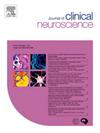Assessment of traumatic brain injury treatment guided by continuous monitoring of intracranial pressure and brain tissue oxygen partial pressure: A single-center pilot study
IF 1.9
4区 医学
Q3 CLINICAL NEUROLOGY
引用次数: 0
Abstract
Severe traumatic brain injury (TBI) is a leading cause of death and disability. Monitoring intracranial pressure (ICP) is recommended, but the data on the outcomes are conflicting. Adding continuous brain tissue oxygen partial pressure (PbtO2) monitoring may have some benefit but the OXY-TC suggested it did not improve 6-month neurological outcomes. This single-center pilot randomized controlled study aimed to evaluate whether adding PbtO2 monitoring was feasible and could improve the prognosis of severe TBI. The participants were randomized into either an ICP alone or an ICP + PbtO2 group for 7 days, with treatment protocols based on existing guidelines. Clinical parameters were collected hourly. The primary outcome was the feasibility of using PbtO2 monitoring. The secondary outcomes were 6-month survival, analyzed by the log-rank test, the 3- and 6-month Glasgow Outcome Scale (GOS) scores, compared between groups by chi-squared test. Seventy patients were included (36 ICP, 34 ICP + PbtO2). The ICP + PbtO2 group had lower mean daily ICP (13.4 vs. 18.2 mmHg, P = 0.0024) and higher mean daily cerebral perfusion pressure (82.1 vs. 74.5 mmHg, P = 0.0055). The ICP + PbtO2 group had higher 6-month survival (79.4 % vs. 55.6 %, P = 0.0337) and more favorable outcomes at 3 months (67.6 % vs. 38.9 %, P = 0.0160) and 6 months (70.6 % vs. 41.7 %, P = 0.0149). Adding PbtO2 monitoring to ICP monitoring is feasible in patients with severe TBI and could maybe improve the intermediate-term outcomes. The results will serve to design larger trials.
通过持续监测颅内压和脑组织氧分压评估脑外伤治疗:单中心试点研究。
严重创伤性脑损伤(TBI)是导致死亡和残疾的主要原因。建议对颅内压(ICP)进行监测,但有关结果的数据却相互矛盾。增加连续脑组织氧分压(PbtO2)监测可能会带来一些益处,但 OXY-TC 研究表明这并不能改善 6 个月的神经功能预后。这项单中心试验性随机对照研究旨在评估增加 PbtO2 监测是否可行,以及能否改善严重创伤性脑损伤的预后。参与者被随机分为单纯 ICP 组或 ICP + PbtO2 组,为期 7 天,治疗方案基于现有指南。每小时收集一次临床参数。主要结果是使用 PbtO2 监测的可行性。次要结果是6个月的存活率(通过对数秩检验进行分析)、3个月和6个月的格拉斯哥结果量表(GOS)评分(通过卡方检验进行组间比较)。共纳入 70 例患者(36 例 ICP,34 例 ICP + PbtO2)。ICP + PbtO2组的日平均ICP较低(13.4 vs. 18.2 mmHg,P = 0.0024),日平均脑灌注压较高(82.1 vs. 74.5 mmHg,P = 0.0055)。ICP + PbtO2 组的 6 个月存活率更高(79.4% 对 55.6%,P = 0.0337),3 个月和 6 个月的预后更佳(67.6% 对 38.9%,P = 0.0160)(70.6% 对 41.7%,P = 0.0149)。在对严重创伤性脑损伤患者进行ICP监测的基础上增加PbtO2监测是可行的,并有可能改善中期预后。这些结果将有助于设计更大规模的试验。
本文章由计算机程序翻译,如有差异,请以英文原文为准。
求助全文
约1分钟内获得全文
求助全文
来源期刊

Journal of Clinical Neuroscience
医学-临床神经学
CiteScore
4.50
自引率
0.00%
发文量
402
审稿时长
40 days
期刊介绍:
This International journal, Journal of Clinical Neuroscience, publishes articles on clinical neurosurgery and neurology and the related neurosciences such as neuro-pathology, neuro-radiology, neuro-ophthalmology and neuro-physiology.
The journal has a broad International perspective, and emphasises the advances occurring in Asia, the Pacific Rim region, Europe and North America. The Journal acts as a focus for publication of major clinical and laboratory research, as well as publishing solicited manuscripts on specific subjects from experts, case reports and other information of interest to clinicians working in the clinical neurosciences.
 求助内容:
求助内容: 应助结果提醒方式:
应助结果提醒方式:


